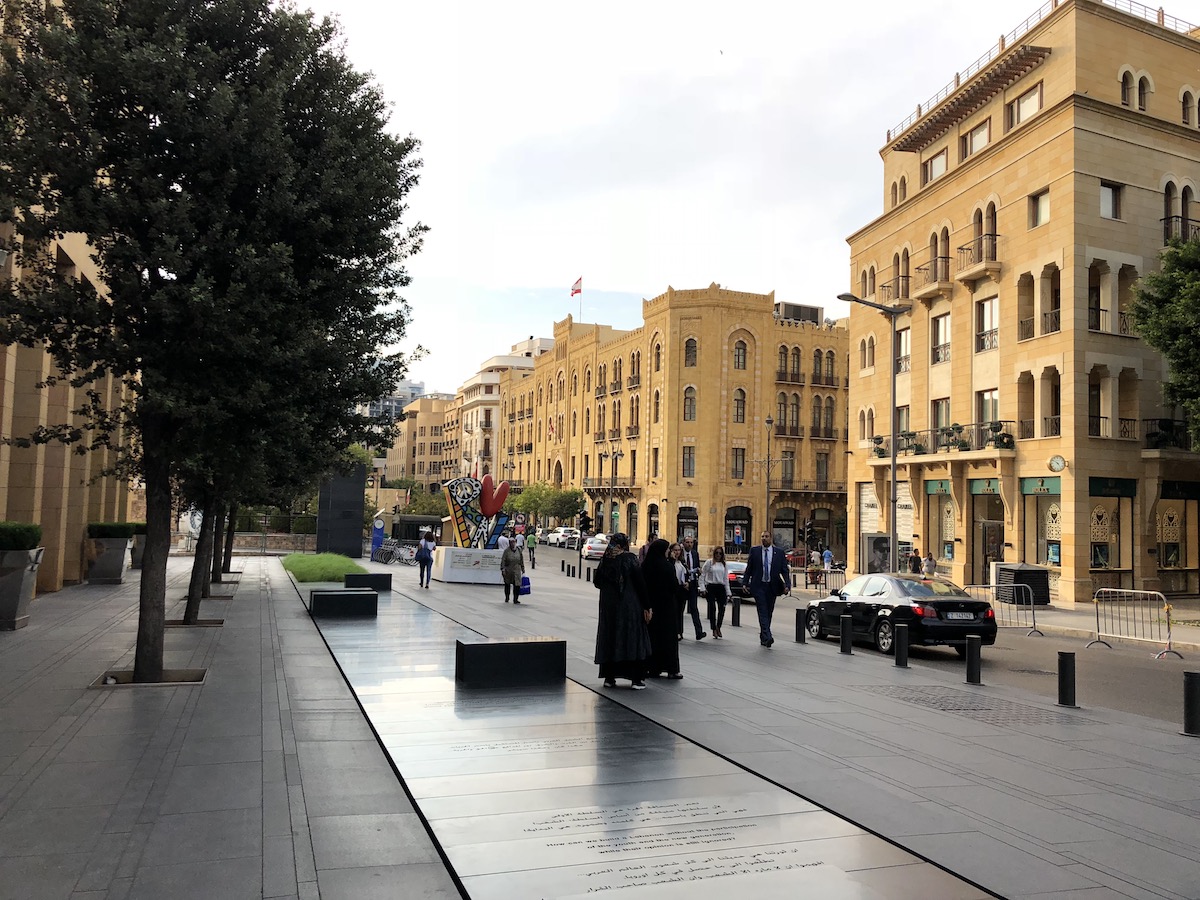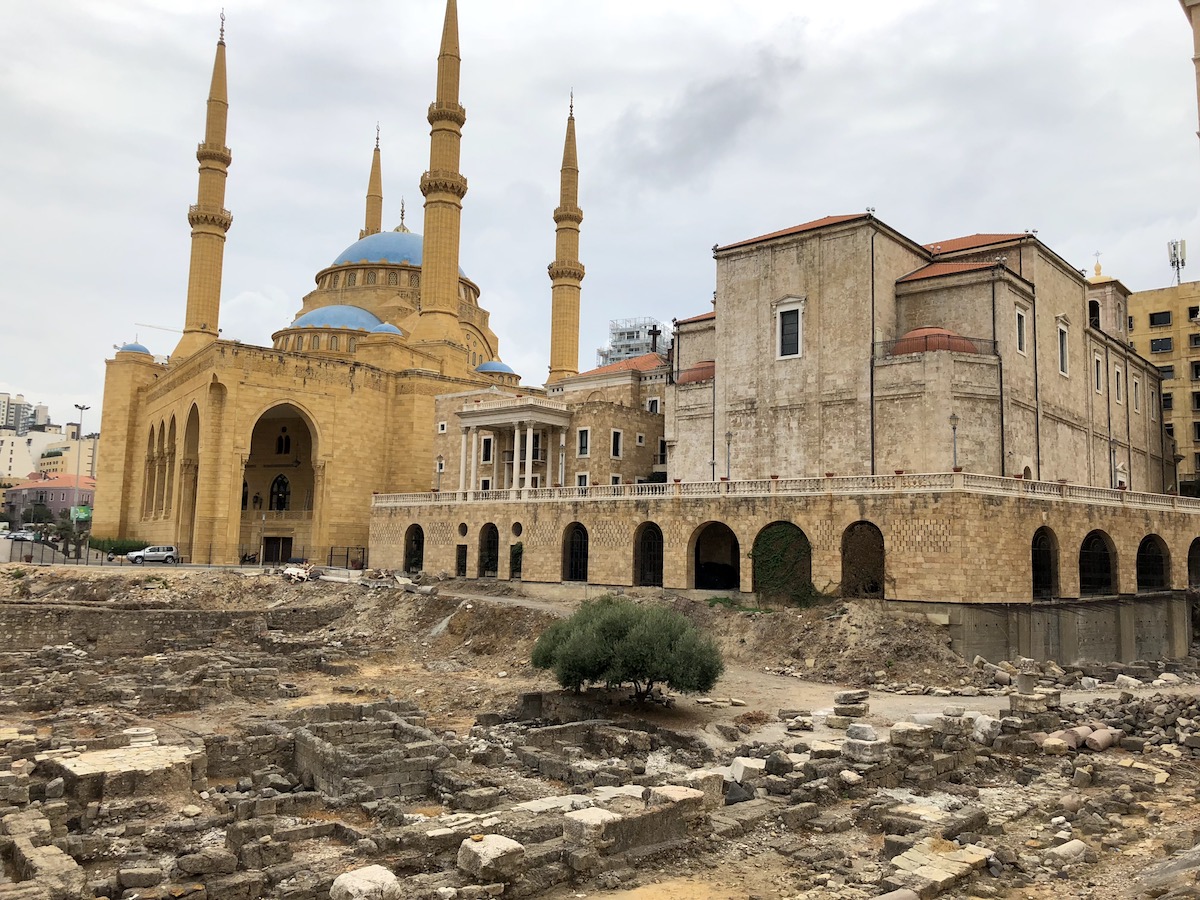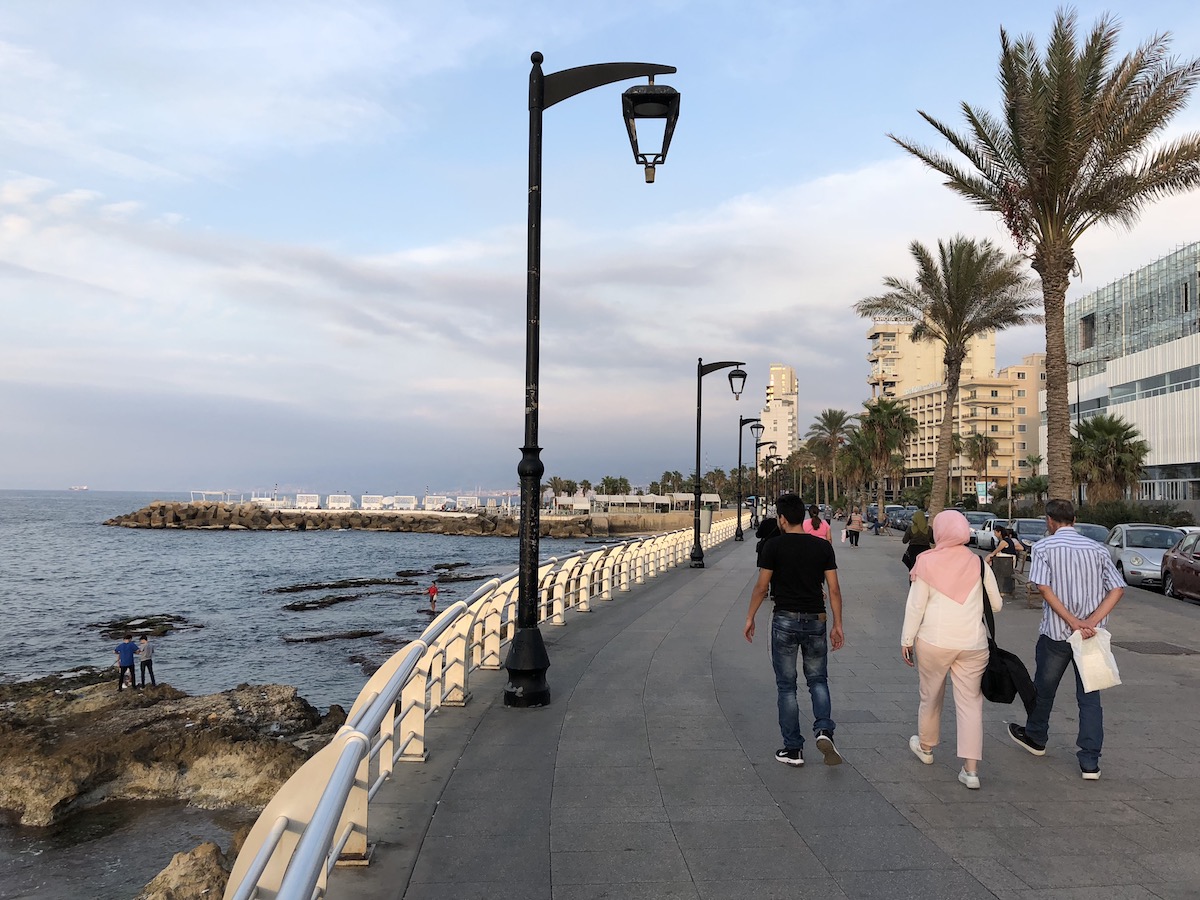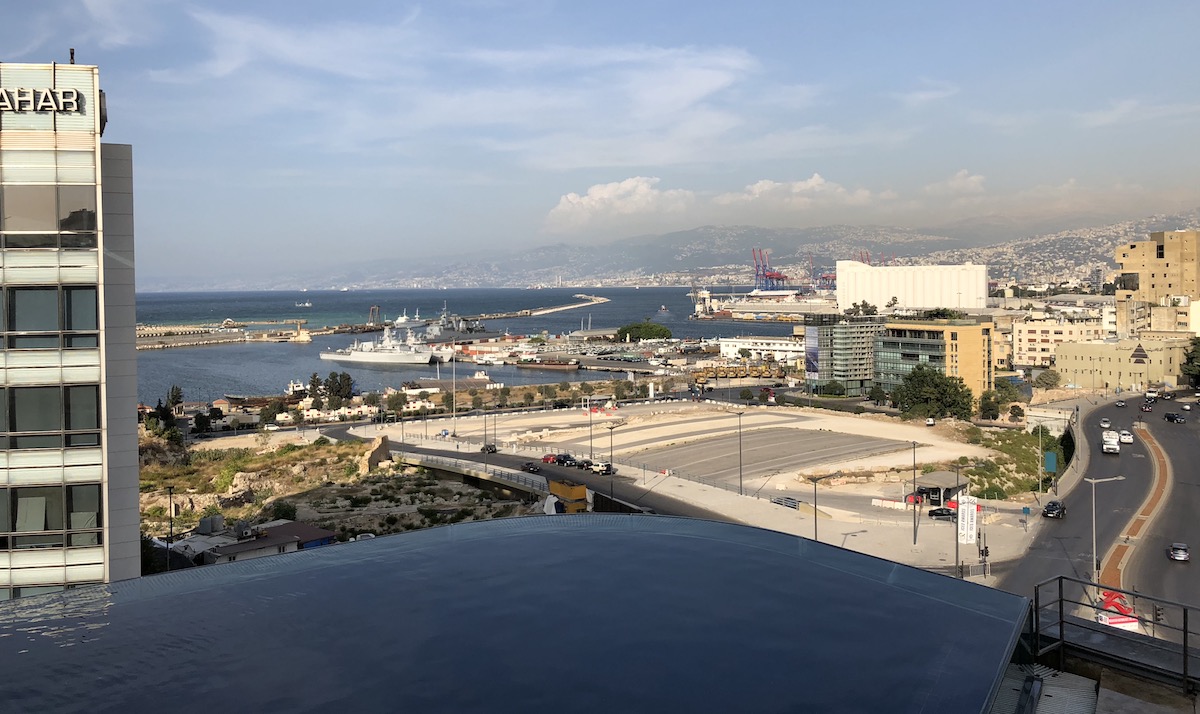In the 70s and 80s Beirut was a city of war, religious violence and death. As a child I watched grainy TV news film of snipers firing indiscriminately at distant targets, of buildings being blasted by missiles, of peoples’ lives being destroyed. Talk was of the murderous green line that separated east Beirut from west, of Christians from Muslims. By the civil war’s end in 1990 the city was a ruin, but less than 20 years later we stayed for a week as holidaymakers.
Friends and family reacted with a mix of concern and disbelief that we’d even consider it but they hadn’t clocked that Lebanon is well on the way to restoring itself, and online reviews told us that there was little if anything to be worried about. Conflict with Israel, the Syrian war and the arrival of tens of thousands of refugees into the country has added stresses and strains in more recent times but the Lebanese people are getting on with life.

We ended up loving our stay in the city. It was exciting, stimulating, chaotic, challenging, different and rewarding. The food and the nightlife was excellent, the people friendly. And we never once felt in the least bit unsafe. But that doesn’t mean that Beirut is perfect. Far from it…
We flew in on a BA A321 awash with Business Class champagne and stuffed with food, and it was night-time as we drove to our modern hotel on the edge of Martyrs’ Square, Le Gray Beirut. Our driver pointed his BMW to the city’s Central District and there was little to see other than the subdued lights of the massive refugee camps north of the airport that remain no-go zones for westerners. The metallic taste of car fumes hinted at the city’s pollution problems as we drove at unnerving speed through safer suburbs of bright neon and block after block of development, some of it dilapidated. Our hotel couldn’t have been more different, swanky and clean, the cliched oasis of calm. We dumped our bags and went out in search of a drink on the attractive Rue Gouraud in the Gemmayzeh district. A few minutes later we were propping up the bar at a small and friendly place called Dragonfly, supping on the refreshing local beer, Almaza, and chatting to a pair of Americans who’ve made the city their home.

By day, Martyrs’ Square is a giant car park and redevelopment zone. Apartment blocks and offices are rising, a modern public open space is promised and the skyline is full of cranes. Beyond lies the port and the northern coast of Lebanon. From the rooftop of our hotel and its infinity pool we noted the various excavations underway, peeling back the history of one of the oldest parts of the city, as well as the traffic careering around the local roads. Beirut’s streets are all about anarchy and aggression. There are numerous grand 4x4s and sleek sports cars, but just as many wrecks cobbled together with filler and hope, and mostly they manage to avoid each other. The soundtrack to all this is a constant blasting of car horns, much of it from dodgy taxis trying to tempt pedestrians.

The Beirut Central District that surrounds Le Gray is a bit of a mixed bag. Much that was old, other than a handful of notable buildings, historic and beautiful churches and mosques, has been wiped off the face of the earth regardless of the amount of damage suffered during the war. The guilty party is the government-backed developer Solidere, which may have its heart in the right place but is doing little for the city’s heritage. What stands now is block after block of modernity, some of it stylish and exciting but a lot of it soulless. Locals we spoke to said ‘this is not Beirut’ with various degrees of despair and it was easy to see why. Who will fill all this new development remains to be seen but there were plenty of empty shop fronts. A central core of the district, around the Place de l’Etoile, is home to Parliament and government ministries and the streets around them are disturbingly quiet and devoid of traffic, cordoned off and manned by armed guards. No wonder the cafes looked so empty. It was a bit like being in one of those zombie movies where the hero wanders into a town that looks, on the surface at least, completely dead.

But this is an area where Roman remains have been unearthed, although we weren’t sure what they were all about because the information boards are missing. There’s a big archaeological site next to the modern and imposing Mohammad Al-Amin Mosque and the neighbouring St George’s Maronite Cathedral. In itself this is a great thing about Beirut, that despite all the hostility of the past we have different religions sitting side by side and getting on with things despite the best efforts of the militants.
Many shops are now gathered around the sleek, modern Beirut Souks, which are about as far removed from the traditional middle eastern souk as you could possibly imagine. In fact, they’re more like a Westfield Shopping Centre and full of designer names rather than lone traders offering bargains and a fun negotiating session. There is nothing about them that screams Beirut and we could just as easily have been in Paris or London or New York.

We walked down to Zaytounah Bay, home to the swanky Beirut Yacht Club, surrounded by towers of luxury apartments and hotels. The marina was stacked with impressive yachts, lined with fancy restaurants and busy with locals out for a walk. This is where the soul of Beirut was being played out during our stay, over the carcass of the lovely old St George’s Hotel. Solidere wants to pull it down and replace it with more luxury plushness but many locals want it left as a reminder of the old Beirut. It’s easy to sympathise with them. Their past is being wiped out, bling is being introduced, much of it foreign and alien to them, and they don’t like it. There’s clearly a lot of money in Lebanon but there are far more poor people who can only dream of mooring multi-million pound yachts in the bay.

Another reminder of the war stands nearby, behind the glitzy Phoenicia Hotel. The old Holiday Inn remains while developers fight over its future, a tower block scarred and blasted by bullets and missiles and once a regular feature of 70s news bulletins.
West of the yacht club lies Beirut’s famous Corniche, which runs around the city’s north-western coastline and is the place to go for a promenade or a jog. Locals love it judging by the numbers out when we went for a stroll. Much of the coast is rocky and not particularly attractive, thanks in part to the rubbish piled up on the tide line, but several beach clubs punctuate the seafront and one evening we stopped at one, the Riviera, for a drink and to watch the sun set. Fishermen stood among the rocks waiting for a catch and another brave soul went for a dip. It was a lovely, relaxing spot and the sky shimmered a voluptuous red.

Nearby stands the American University, a sprawling campus of handsome buildings old and new that stretch as far as the district of Hamra. After our walk along the Corniche we turned off in search of its man drag, the Hamra Road, up hilly and dimly lit streets and staircases, fighting the humidity but charmed by the numerous cute feral cats. Hamra is a lively and brash part of town, one that’s been visited by the developers but that retains much more of its character than the Central District. As well as being a magnet for students and university staff, it’s a popular shopping street with locals, who can choose from global chains as well as small-time purveyors of Lebanese sweets and fashions. We ate and drank in the district on several nights and I loved it’s atmosphere.

Further south, Beirut is far less glitzy and wealthy but much more real. The architecture is more ramshackle, some roads get wider, more polluted and less pedestrian friendly, others become narrow and winding, full of interesting local shops, bars and cafes. There are more reminders of war, like Beit Beirut, and further on the National Museum with its collection of Lebanese antiquities. It’s in these and other suburbs where the majority live and work, those who can’t afford a yacht or a tank-like Range Rover.
There’s precious little open space in the city and that’s certainly true of the east, over towards the nightlife spots of Rue Gouraud and Mar Mikhael. Fortunately the developers have mostly left these districts alone and they’re all the better for it. The narrow roads that run through it are busy with cars and motorbikes, and teams of valet parkers stand waiting to service rich clients. Buildings wear the scars of war and some were obviously and hurriedly patched up after being holed by a missile or two. Try hunting for an older building without a bullet hole and you’ll be walking for a long time.
This is a district of old palaces, ancient hovels, sturdy churches and busy shops and it’s absolutely wonderful. It’s also the place to go for great nightlife. But that’s a story in itself…

